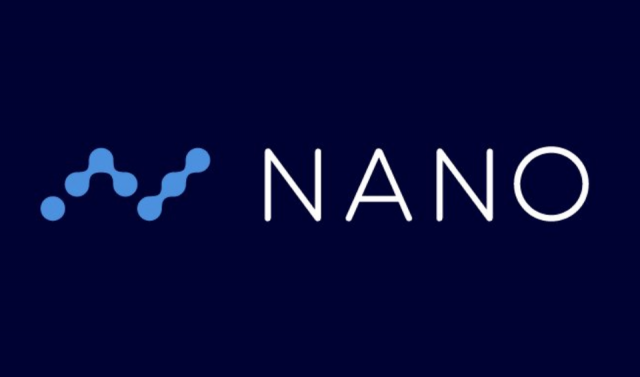
NANO Class Action Lawsuit: An Unknown Precedent for Cryptocurrency

NANO (NANO)–For those unaware, NANO (re-branded from RaiBlocks XRB), is embroiled in one of the larger scandals to hit cryptocurrency. On February 9th it was revealed by Fancesco Firano that his Italian-based exchange BitGrail, which dealt almost exclusively in NANO, had been hacked for more than 17 million coins, worth about 187 million USD.
Since that time, Firano and the NANO development team have been engaged in a lengthy back and forth game of accusations, with neither side willing to accept responsibility. NANO investors, some with coins lost in the millions of dollars, are scrambling to find a way to recover their stolen currency, in addition to receiving adequate monetary compensation.
CoinTelegraph has broken the story that a class action lawsuit is being filed in the United States Eastern District Court of New York against the NANO development team for negligence related to the security of the cryptocurrency.
The lawsuit, in addition to seeking blame with the company originally behind RaiBlocks XRB, is proposing the company create an emergency “recovery fork” that will provide replacement tokens for those impacted by the hack. To be clear, these coins will not be the same as current NANO currency, but will function similar to last August’s Bitcoin Cash hard fork that produced BCH coins in a 1:1 match with BTC holders. However, the NANO recovery fork will only apply to those impacted by the hack, with NANO’s blockchain at the time of the theft being used to locate the missing coins.
How Will the Recovery Fork Help NANO Investors?
There are three problems with this method:
-
- The coins do not hold the same value as current NANO. This is a bit of a contentious point. The market decides the value of any security traded on an exchange. Theoretically, these recovery NANOs could become even more valuable than the original, if someone is willing to pay a premium for tokens recovered in a hack, or if the impacted recipients establish a trading platform only using recovered tokens. But, more than likely, the recovery forked coins will be much like Bitcoin Gold and Bitcoin Diamond: a fraction of the value of the original currency. While it’s understandable that those impacted by the hack are looking for compensation, the recovery tokens are only going to serve to confuse the market and devalue existing NAN , while adding very little in terms of reimbursement.
- Forks tend to be bad for the native currency. Look no further than the existing contention between Bitcoin and Bitcoin Cash, or the ardent way Charlie Lee went after Litecoin Cash as a shameless scam of Litecoin. The recovery fork is based in more admirable roots than previous forks–in principle, it’s attempting to provide fair indemnity for those who were robbed in the hack–but it still represents a deviation in the market for NANO. Investors and members of the general public who have no affiliation to the BitGrail hack are going to wonder why some new iteration of NANO exists on the market.
- Creates a precedent that could be difficult to follow. Hacks happen. They’re not fair, they are awful to the investors impacted, and represent a modern day form of digital robbery. But hacks are apart of life in the present iteration of cryptocurrency. The lack of centralization and regulation, which is essential to how cryptocurrency and the market performs, comes with the trade-off of increased crime and degenerate behavior. Crypto, as an industry, should not condone hacks and illegal behavior, but instituting recovery forks may not be the best solution. The recovery represents a novel use for blockchain, but it doesn’t actually fix the problem. Some individual or group of individuals was still able to make off with 17 million XRB while investors are held liable. Compensating them with a “fake” currency that holds no intrinsic value or development support, in addition to watering down the value of the original investment (in this case NANO), does not come across as an adequate solution.
A Different Solution for the Hack?
A better method is for the industry, as a whole, to hold greater accountability and responsibility to exchanges for investor funds. Many of these exchanges, from Coinbase to Bittrex to Binance, are raking in substantial profits in transaction and withdrawal fees, in addition to the premiums collected from currency developers to list their coin. The BitGrail hack represents an anomaly, because it was a small operation being run by essentially one developer out of Italy. It was also one of the few ways to purchase Raiblocks ahead of being listed on Kucoin and Binance. Even then, we could look at the situation as a trade-off for investors: engaging in a small enterprise without the capital to cover user liability increased the risk of investing, but also allowed early investors to buy into a coin that quickly appreciated from 0.20 USD to 23 USD in the span of a month.
Here’s the thing: it’s devastating if you were apart of the hack that lost 17 million coins valued at the time at over 187 million USD. Everyone can agree that these investors deserve some form of compensation for the way they were treated by both the owner of BitGrail and the NANO team (a situation that has devolved into a name-calling, blame-placing conflict while the BitGrail user base is suffering the financial ramifications). But a recovery fork is only going to give pennies on the dollar, while doing nothing to hold the exchange liable for how it handled investor security. It’s not much of a fix to compensate damages by further devaluing the currency that was stolen, in addition to placing the majority of blame on the development team.